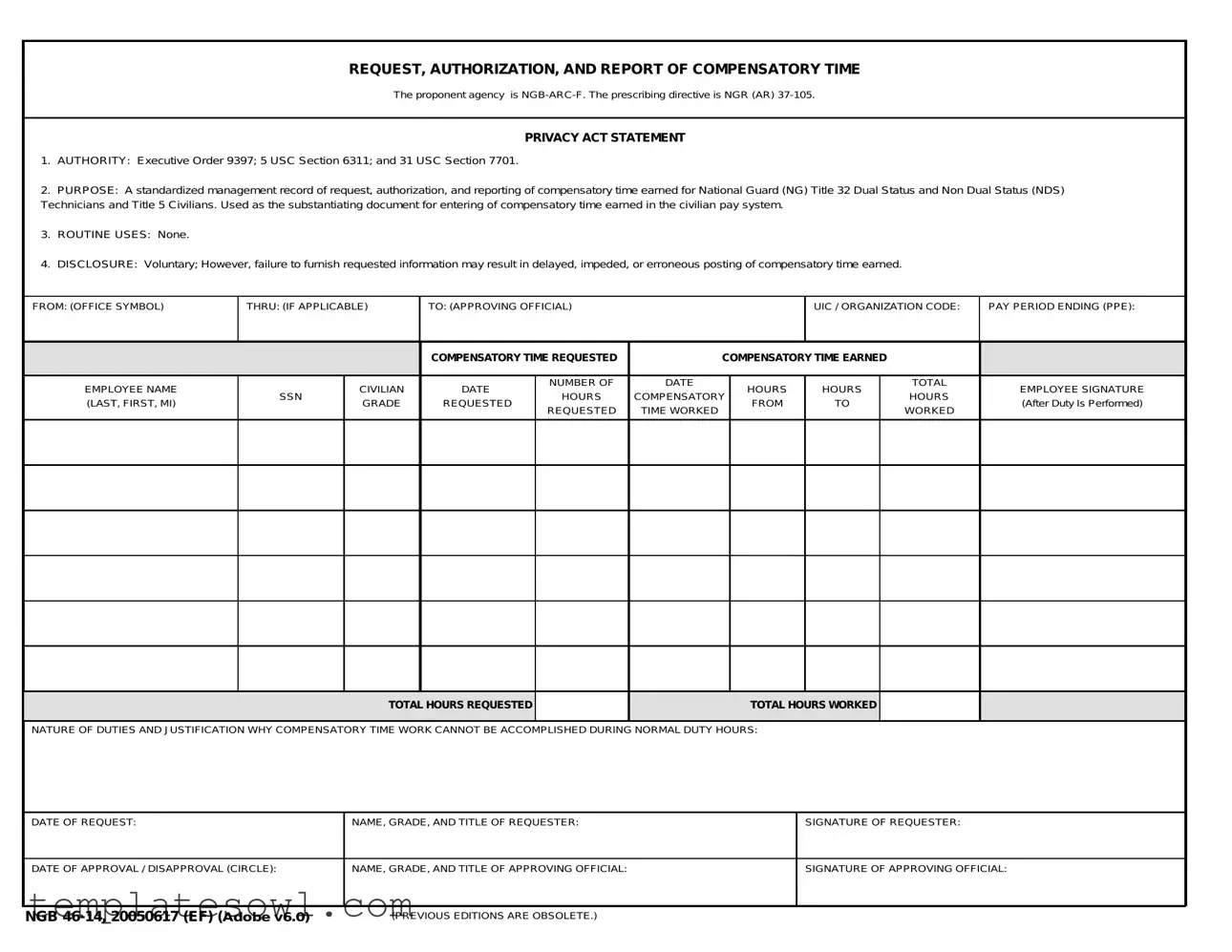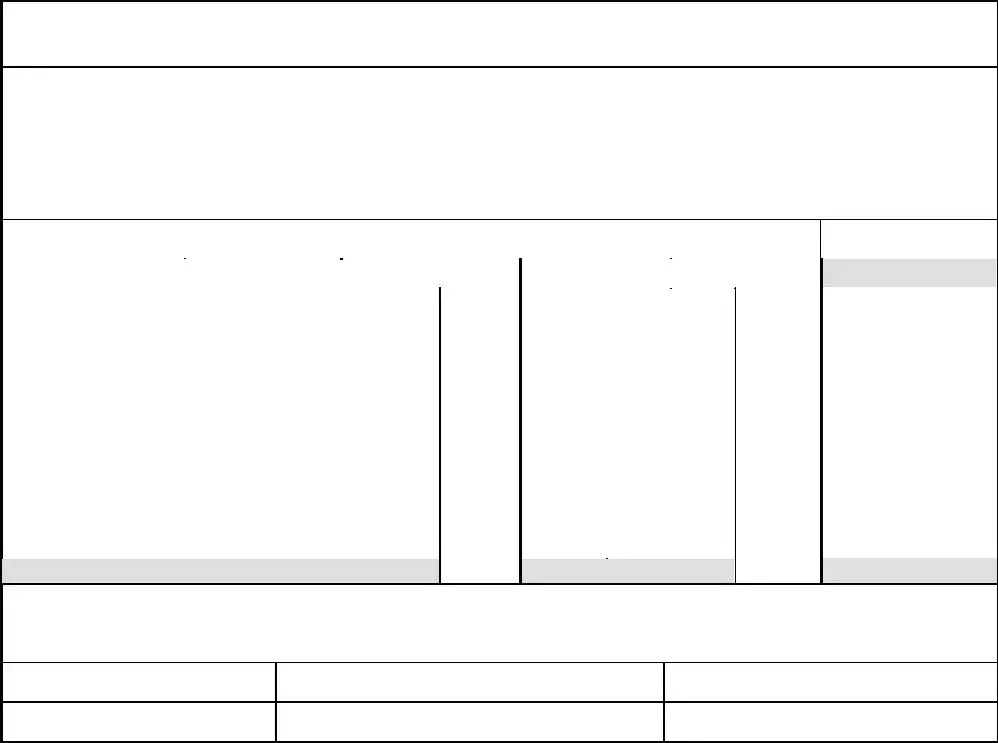What is the purpose of the NGB 46 14 form?
The NGB 46 14 form is designed to manage requests for compensatory time earned by National Guard Title 32 Dual Status and Non-Dual Status Technicians, as well as Title 5 Civilians. It serves as a standardized record for documenting requests, authorizations, and reporting of compensatory time earned. This form is critical for accurately entering earned compensatory time into the civilian pay system.
Who should use the NGB 46 14 form?
This form is intended for use by Title 32 Dual Status and Non-Dual Status Technicians, along with Title 5 Civilian employees within the National Guard. These individuals must complete the form to formally request compensatory time when the work cannot be accomplished during regular duty hours.
What information is required to complete the form?
Key details needed to fill out the NGB 46 14 form include the employee's name, Social Security Number, UIC/organization code, the pay period ending date, the type of compensatory time requested, total hours worked, and the nature of the duties performed. Additionally, a signature from both the requester and the approving official is required.
What happens if I do not provide the requested information?
While disclosure of the requested information is voluntary, not providing this information can lead to delays, issues, or inaccuracies when posting your earned compensatory time. It is advisable to complete the form thoroughly to prevent any complications.
How is privacy protected when filling out the NGB 46 14 form?
The form operates under the Privacy Act, which dictates that information collected is protected and used solely for the purpose of managing compensatory time. The authority for collection includes Executive Order 9397 and specific sections of the U.S. Code. Routine uses of this data are not applicable, providing a layer of confidentiality for individuals submitting requests.
What should I do if my request for compensatory time is denied?
If your request is disapproved, you should receive a notification from the approving official that includes the reasons for the denial. Understanding this feedback can help you address the concerns raised and improve future requests. If necessary, you can follow up to discuss the matter directly with the approving official.
When should I submit the NGB 46 14 form?
The NGB 46 14 form should be submitted as soon as it becomes clear that compensatory time will be necessary. Doing so early allows for proper processing and approval before the compensatory time is earned. Timely submission will help ensure that you receive the hours you've earned without issues.
Is there a deadline for using the earned compensatory time?
While specific deadlines may not be stated on the form itself, there are generally regulations regarding when you must use the earned compensatory time. It is recommended to check with your supervisor or human resources representative for details about any time limits on the use of these hours.
What should I do if I have additional questions about the NGB 46 14 form?
If you have further questions or need clarification regarding the NGB 46 14 form, it is advisable to reach out to your supervisor or the human resources department. They can provide guidance specific to your situation and ensure that you have the information needed to properly navigate the compensatory time process.

